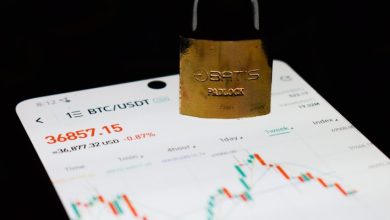How to Protect Your Crypto Assets from Hacks and Scams

- Understanding the risks of hacks and scams in the crypto world
- Best practices for securing your crypto assets
- Common tactics used by hackers and scammers in the crypto space
- How to spot and avoid potential scams targeting your crypto holdings
- Protecting your private keys and passwords: essential tips for crypto security
- What to do if you fall victim to a crypto hack or scam
Understanding the risks of hacks and scams in the crypto world
When it comes to safeguarding your crypto assets, it’s crucial to understand the risks associated with hacks and scams in the crypto world. Hackers are constantly seeking ways to exploit vulnerabilities in crypto exchanges and wallets to steal funds. Scammers, on the other hand, use deception and manipulation to trick individuals into giving up their private keys or sending cryptocurrency to fraudulent addresses.
One common type of hack in the crypto world is a phishing attack, where hackers create fake websites or emails that mimic legitimate platforms to trick users into providing their login credentials. Another risk is malware, which can infect a user’s device and steal sensitive information, such as private keys.
To protect yourself from hacks and scams, it’s essential to be vigilant and follow best practices for securing your crypto assets. This includes using hardware wallets, enabling two-factor authentication, and only interacting with reputable exchanges and platforms. Additionally, staying informed about the latest security threats and being cautious when sharing personal information online can help reduce the risk of falling victim to a hack or scam.
Best practices for securing your crypto assets
When it comes to securing your crypto assets, there are several best practices you can follow to protect yourself from hacks and scams. One important step is to use a hardware wallet to store your assets securely offline. This reduces the risk of online attacks and keeps your private keys safe.
Another essential practice is to enable two-factor authentication on all your accounts. This adds an extra layer of security by requiring a second form of verification before allowing access. Be sure to use unique and strong passwords for each of your accounts to prevent unauthorized access.
Regularly updating your software and keeping your antivirus programs up to date can also help protect your assets from malware and other cyber threats. Avoid clicking on suspicious links or downloading attachments from unknown sources to minimize the risk of falling victim to phishing scams.
Additionally, consider diversifying your investments across multiple wallets and exchanges to spread out the risk. This way, if one platform is compromised, you won’t lose all your assets. Be cautious about sharing personal information online and be wary of unsolicited offers or requests for your crypto assets.
By following these best practices and staying vigilant, you can significantly reduce the chances of falling victim to hacks and scams, safeguarding your crypto assets for the long term.
Common tactics used by hackers and scammers in the crypto space
There are various common tactics that hackers and scammers use to target individuals in the crypto space. One of the most prevalent methods is phishing, where scammers send fraudulent emails or messages pretending to be from legitimate organizations in order to trick people into revealing their private keys or passwords. Another tactic is social engineering, where scammers manipulate individuals into giving up sensitive information by posing as someone trustworthy.
Additionally, hackers often use malware to gain access to crypto wallets and steal funds. This can happen through fake apps, downloads, or even compromised websites. Another tactic is SIM swapping, where scammers convince a telecom provider to transfer a victim’s phone number to a new SIM card, allowing them to bypass two-factor authentication and gain access to crypto accounts.
It’s important to stay vigilant and protect your crypto assets by using secure passwords, enabling two-factor authentication, and avoiding clicking on suspicious links or downloading unknown software. By staying informed about common tactics used by hackers and scammers in the crypto space, you can better protect your investments and reduce the risk of falling victim to fraudulent activities.
How to spot and avoid potential scams targeting your crypto holdings
When it comes to protecting your crypto assets, it’s essential to be vigilant and aware of potential scams that could target your holdings. Here are some tips on how to spot and avoid falling victim to these scams:
- Be cautious of unsolicited emails or messages asking for your private keys or personal information. Legitimate organizations will never ask for this information.
- Always double-check the URLs of websites before entering any sensitive information. Scammers often create fake websites that look very similar to legitimate ones.
- Avoid clicking on links or downloading attachments from unknown sources. These could contain malware designed to steal your crypto assets.
- Research any company or individual before investing in their crypto project. Look for reviews, ratings, and feedback from other investors to gauge their legitimacy.
- Use hardware wallets or cold storage solutions to store your crypto assets securely offline. This can help protect them from online hacks and scams.
By staying informed and following these tips, you can help protect your crypto holdings from potential scams and fraudsters looking to take advantage of unsuspecting investors.
Protecting your private keys and passwords: essential tips for crypto security
When it comes to protecting your crypto assets from hacks and scams, one of the most crucial steps you can take is safeguarding your private keys and passwords. These are the keys to your digital wallet, and if they fall into the wrong hands, you could lose all of your assets in an instant. Here are some essential tips to help you keep your private keys and passwords secure:
- Never share your private keys or passwords with anyone, no matter how trustworthy they may seem. Keep them to yourself at all times.
- Use a secure password manager to store your passwords and private keys. This will help protect them from being easily accessed by hackers.
- Enable two-factor authentication on all of your accounts to add an extra layer of security. This will require you to verify your identity using a second method, such as a text message or email, before accessing your account.
- Regularly update your passwords and private keys to prevent unauthorized access. Use a combination of letters, numbers, and special characters to create strong and unique passwords.
- Be cautious of phishing attempts, where scammers try to trick you into revealing your private keys or passwords. Always double-check the URLs of websites and emails before entering any sensitive information.
By following these essential tips for protecting your private keys and passwords, you can help ensure that your crypto assets remain safe and secure from potential hacks and scams. Remember, it’s better to be safe than sorry when it comes to safeguarding your digital wealth.
What to do if you fall victim to a crypto hack or scam
If you have unfortunately fallen victim to a crypto hack or scam, it is crucial to take immediate action to minimize any potential losses. First and foremost, you should report the incident to the appropriate authorities, such as the local law enforcement agency or the relevant regulatory body. This will help to ensure that the perpetrators are held accountable for their actions and prevent them from targeting other individuals in the future.
Next, you should contact your cryptocurrency exchange or wallet provider to report the hack or scam. They may be able to freeze your account or take other measures to prevent further unauthorized transactions. Additionally, you should change your account passwords and enable two-factor authentication to enhance the security of your account.
It is also important to monitor your accounts regularly for any suspicious activity and report any unauthorized transactions immediately. This will help to prevent further losses and increase the likelihood of recovering your stolen funds. In some cases, it may be possible to trace the stolen funds and recover them with the help of law enforcement or cybersecurity professionals.
Finally, it is essential to learn from your experience and take steps to improve the security of your crypto assets in the future. This may include using hardware wallets, encrypting your private keys, and only using reputable cryptocurrency exchanges. By taking these precautions, you can greatly reduce the risk of falling victim to a crypto hack or scam in the future.



